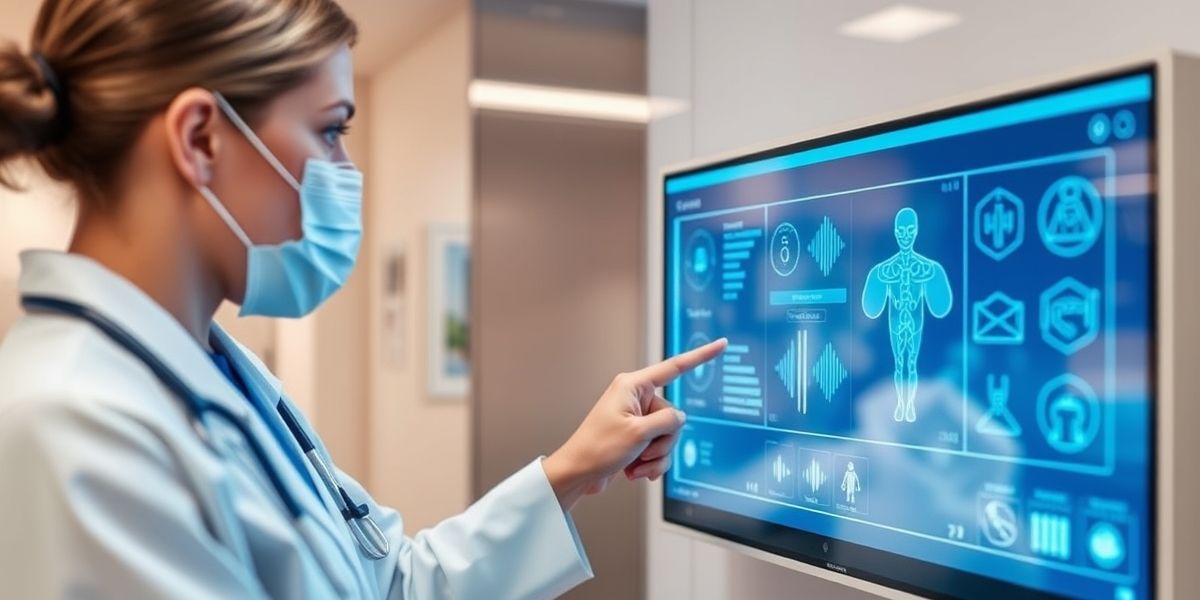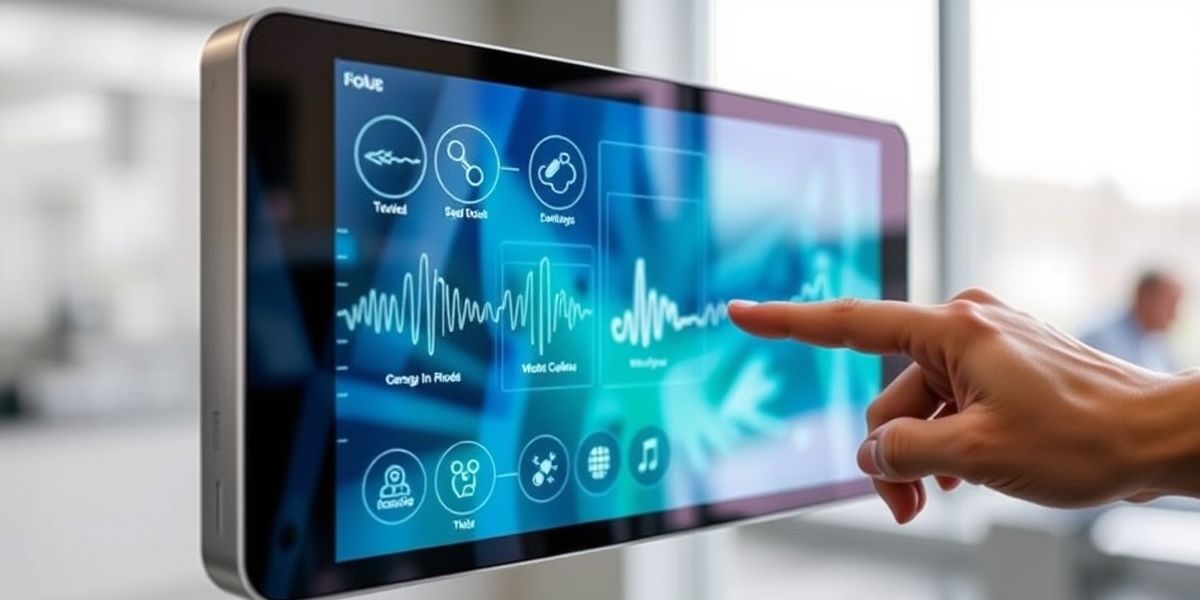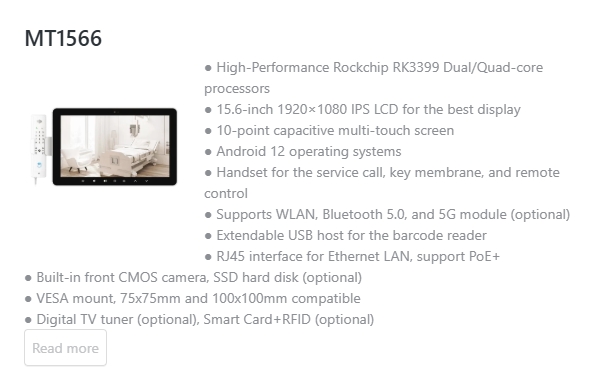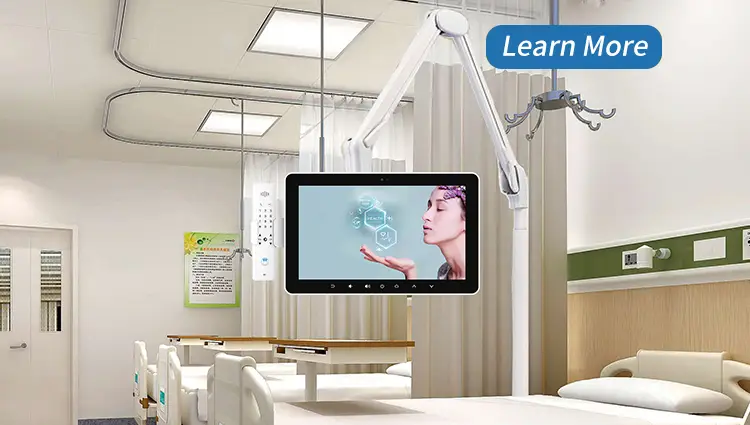In today’s fast-paced healthcare industry, technology plays a critical role in improving patient outcomes and streamlining clinical workflows. Among the innovations driving this transformation is the medical touch display—a specialized touchscreen designed to meet the unique demands of medical environments. From operating rooms to patient bedside systems, these devices combine durability, precision, and hygiene to enhance the delivery of care. This article explores the world of medical touch displays, covering their types, applications, benefits, standards, and future trends, while offering practical guidance for healthcare providers in Europe and the United States.

photo from internet
What Are Medical Touch Displays?
Medical touch displays are advanced touchscreen interfaces engineered for use in healthcare settings. Unlike consumer-grade touchscreens found in smartphones or tablets, these displays are built to withstand the rigors of hospitals, clinics, and laboratories. They feature robust designs, high-resolution visuals, and often include antimicrobial coatings to reduce the spread of infections—a critical requirement in sterile environments.
The importance of medical touch displays lies in their ability to provide intuitive, reliable access to critical information. Whether it’s a surgeon reviewing real-time imaging during a procedure or a nurse updating a patient’s electronic health record (EHR), these devices are indispensable tools in modern medicine. As healthcare systems in Europe and the United States increasingly digitize, understanding the capabilities of medical touch displays is key to leveraging their full potential.
Types of Medical Touch Displays
Medical touch displays come in various forms, each utilizing different technologies suited to specific healthcare needs. Here’s a breakdown of the most common types:
Resistive Touch Screens
Resistive touch screens operate by detecting pressure on the screen’s surface. This makes them highly versatile, as they can be used with fingers, styluses, or even gloved hands—a significant advantage in sterile settings like operating rooms. While they may lack the multi-touch capabilities of other technologies, their affordability and reliability make them a popular choice for patient monitoring systems and EHR interfaces.
Capacitive Touch Screens
Capacitive touch screens, widely known for their use in smartphones, rely on the electrical properties of the human body to detect touch. These displays offer superior sensitivity, multi-touch functionality, and crisp visuals, making them ideal for applications requiring precision, such as diagnostic imaging or surgical navigation. However, they typically require bare-hand contact, which can limit their use in environments where gloves are mandatory unless specially adapted.
Infrared Touch Screens
Infrared touch screens use a grid of infrared light beams to detect touch, offering exceptional durability and resistance to surface damage. They function well in harsh conditions, such as exposure to liquids or contaminants, and can be operated with gloves or other objects. This makes them suitable for high-traffic areas like emergency rooms or labs where reliability is paramount.
Each type of touch technology has its strengths, and selecting the right one depends on the specific demands of the healthcare application.

photo from internet
Applications of Medical Touch Displays
Medical touch displays are transforming healthcare by supporting a wide range of applications. Below are some key examples:
Operating Rooms
In surgical suites, touch displays allow surgeons to access patient data, control equipment, and view high-definition imaging in real time. Their glove-compatible interfaces and easy-to-clean surfaces ensure they meet the stringent hygiene standards of these critical environments.
Patient Rooms
Bedside touch displays empower patients to adjust room settings, access educational content, or communicate with staff. For clinicians, these devices provide instant access to vital signs and medical records, improving responsiveness and care quality.
Diagnostic Laboratories
Radiologists and pathologists rely on high-resolution touch displays to analyze medical images, zoom into details, and collaborate on diagnoses. The precision and clarity of these screens enhance diagnostic accuracy.
Electronic Health Records (EHR)
Touch displays streamline EHR management by enabling clinicians to input data, order tests, and review histories with a few taps. This reduces paperwork and minimizes errors, enhancing overall efficiency.
These diverse applications highlight the versatility of medical touch displays across healthcare settings.
Benefits of Medical Touch Displays
The integration of touch displays into healthcare offers tangible advantages that improve both patient care and operational performance. Here are some of the most significant benefits:
Improved Workflow Efficiency
Touch interfaces are intuitive and user-friendly, reducing the time clinicians spend navigating complex systems. This allows them to focus more on patient interaction rather than administrative tasks.
Enhanced Patient Care
With instant access to patient data, real-time monitoring, and imaging, medical touch displays enable faster, more informed decision-making. This can lead to quicker interventions and better outcomes.
Reduced Errors
Manual data entry is prone to mistakes, but touch displays simplify the process with dropdown menus, pre-filled fields, and direct input options. This minimizes transcription errors and ensures data accuracy.
Infection Control
Hygiene is a top priority in healthcare, and medical touch displays address this with antimicrobial coatings and seamless designs that are easy to disinfect. This helps prevent the spread of hospital-acquired infections.
These benefits make medical touch displays a valuable investment for healthcare providers aiming to optimize performance and safety.

photo from internet
Standards and Regulations for Medical Touch Displays
To ensure safety and reliability, medical touch displays must adhere to strict standards and regulations. Here are some of the key frameworks governing their use:
IEC 60601-1
This international standard outlines safety and performance requirements for medical electrical equipment, including touch displays. Compliance ensures devices can operate safely in clinical environments without posing risks to patients or staff.
Ingress Protection (IP) Ratings
IP ratings measure a display’s resistance to dust and water—crucial for maintaining hygiene. For example, an IP65-rated display is dust-tight and protected against water jets, making it suitable for frequent cleaning.
FDA Guidelines (United States)
In the U.S., the Food and Drug Administration (FDA) regulates medical devices, including touch displays, to ensure they meet safety and efficacy standards. Manufacturers must demonstrate compliance before marketing their products.
EU Medical Device Regulation (Europe)
In Europe, the Medical Device Regulation (MDR) sets similar requirements, emphasizing safety, performance, and traceability. Touch displays must carry a CE mark to be sold in the European market.
Adhering to these standards builds trust and ensures that medical touch displays perform reliably in high-stakes environments.
Choosing the Right Medical Touch Display
Selecting the appropriate medical touch display requires careful consideration of several factors. Here’s a guide to making an informed decision:
Size and Resolution
The display should be large enough to present information clearly without causing eye strain. High resolution is essential for applications like imaging, where detail is critical.
Touch Technology
Consider the intended use—resistive screens for glove compatibility, capacitive for precision, or infrared for durability. Match the technology to the environment and user needs.
Durability and Hygiene
Look for displays with rugged construction, antimicrobial surfaces, and high IP ratings to withstand frequent cleaning and exposure to contaminants.
System Integration
Ensure the display can connect seamlessly with existing EHR systems, diagnostic tools, or other healthcare software through compatible interfaces and protocols.
Cost vs. Value
While budget is a factor, prioritize long-term benefits like reliability and efficiency over upfront cost. A higher-quality display may reduce maintenance expenses over time.
By evaluating these criteria, healthcare providers can choose a touch display that aligns with their operational goals and patient care standards.

photo from internet
Future Trends in Medical Touch Displays
The evolution of medical touch displays is closely tied to broader technological advancements. Here are some trends shaping their future:
Flexible Displays
Emerging flexible screen technology could lead to lightweight, portable medical devices with new form factors, such as foldable diagnostic tools or wearable monitors.
Artificial Intelligence (AI) Integration
AI-powered touch displays could offer predictive analytics, voice-activated controls, or personalized interfaces, enhancing usability and decision-making.
Augmented Reality (AR)
AR overlays on touch displays could provide clinicians with real-time data, such as 3D anatomical models or procedural guidance, directly on the screen.
Telemedicine Expansion
As remote healthcare grows, touch displays will support virtual consultations, remote monitoring, and patient-provider communication, bridging geographical gaps.
These innovations promise to expand the capabilities of medical touch displays, keeping them at the forefront of healthcare technology.
Conclusion
Medical touch displays are more than just tools—they are transformative assets that enhance patient care, improve efficiency, and ensure safety in healthcare settings. By understanding their types, applications, benefits, and compliance requirements, providers in Europe and the United States can harness their potential to meet modern demands. As technology advances, these displays will continue to evolve, driving the future of healthcare toward greater precision and connectivity. Whether you’re upgrading a hospital’s systems or exploring cutting-edge solutions, medical touch displays are a cornerstone of progress worth investing in.
FAQs
1. What is the difference between a medical touch display and a regular touch screen?
Medical touch displays are purpose-built for healthcare, offering features like antimicrobial coatings, durability, and compliance with standards like IEC 60601-1, unlike consumer touchscreens designed for general use.
2. How do medical touch displays help in preventing infections?
They feature antimicrobial surfaces and seamless designs that are easy to clean, reducing the risk of bacterial or viral transmission in clinical settings.
3. Can medical touch displays be used with gloves?
Yes, technologies like resistive and infrared touch screens are glove-compatible, making them ideal for sterile environments where gloves are required.
4. What are the key features to look for in a medical touch display?
Prioritize high resolution, appropriate touch technology, durability, hygiene features, and compatibility with healthcare systems.
5. How do medical touch displays integrate with existing healthcare systems?
They connect via standardized interfaces (e.g., USB, HDMI) and software protocols, ensuring seamless integration with EHRs, imaging tools, and other medical platforms.


